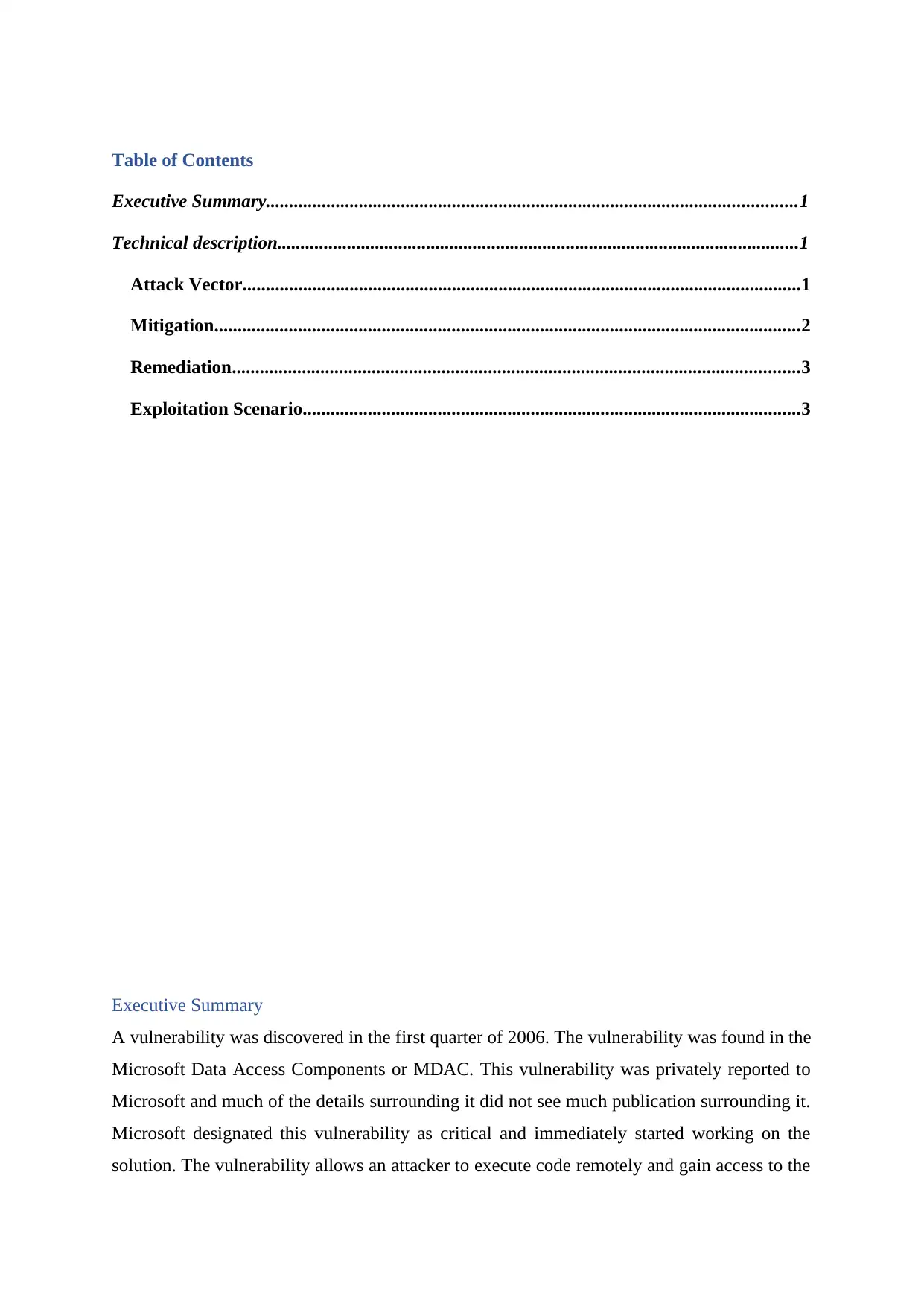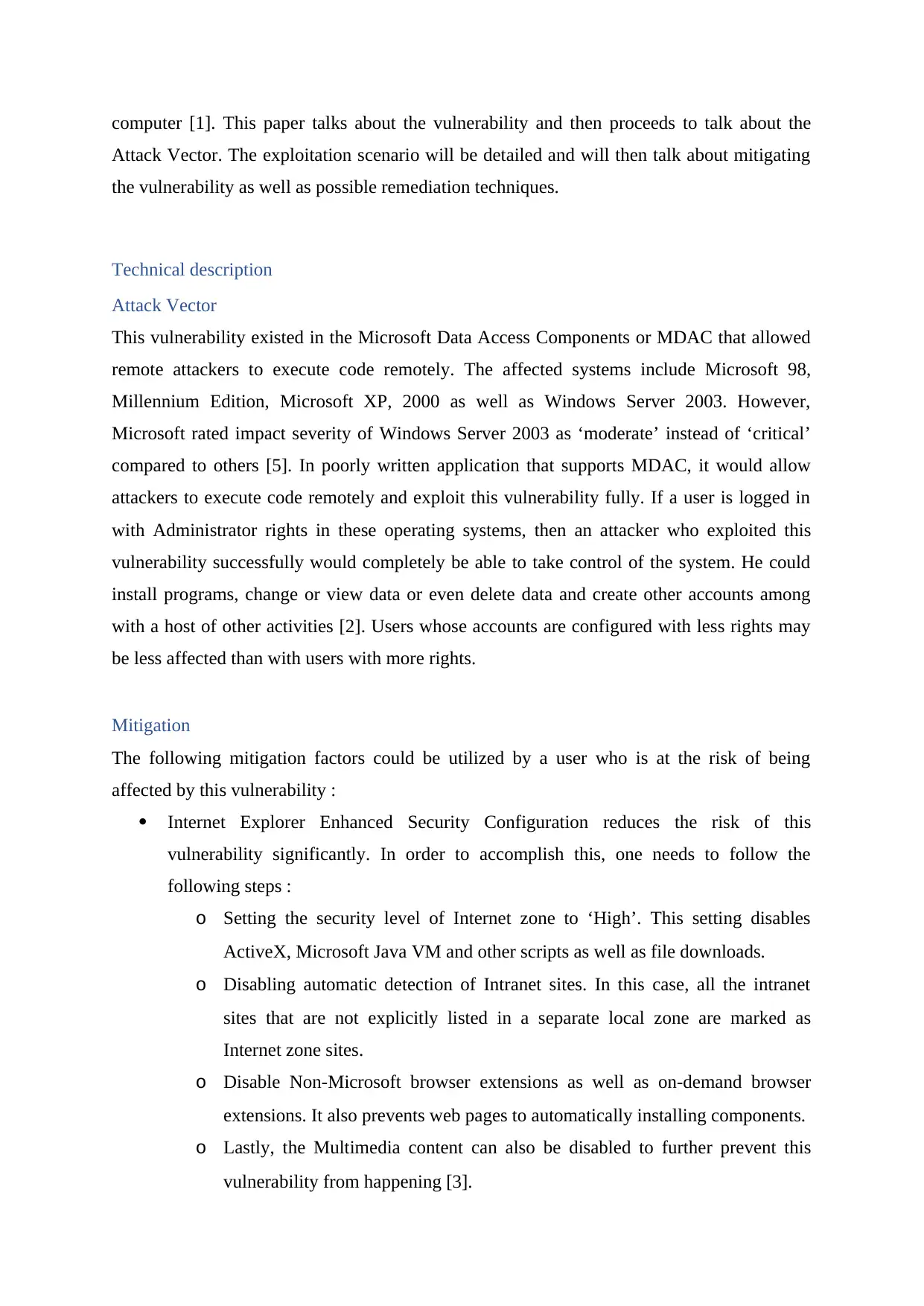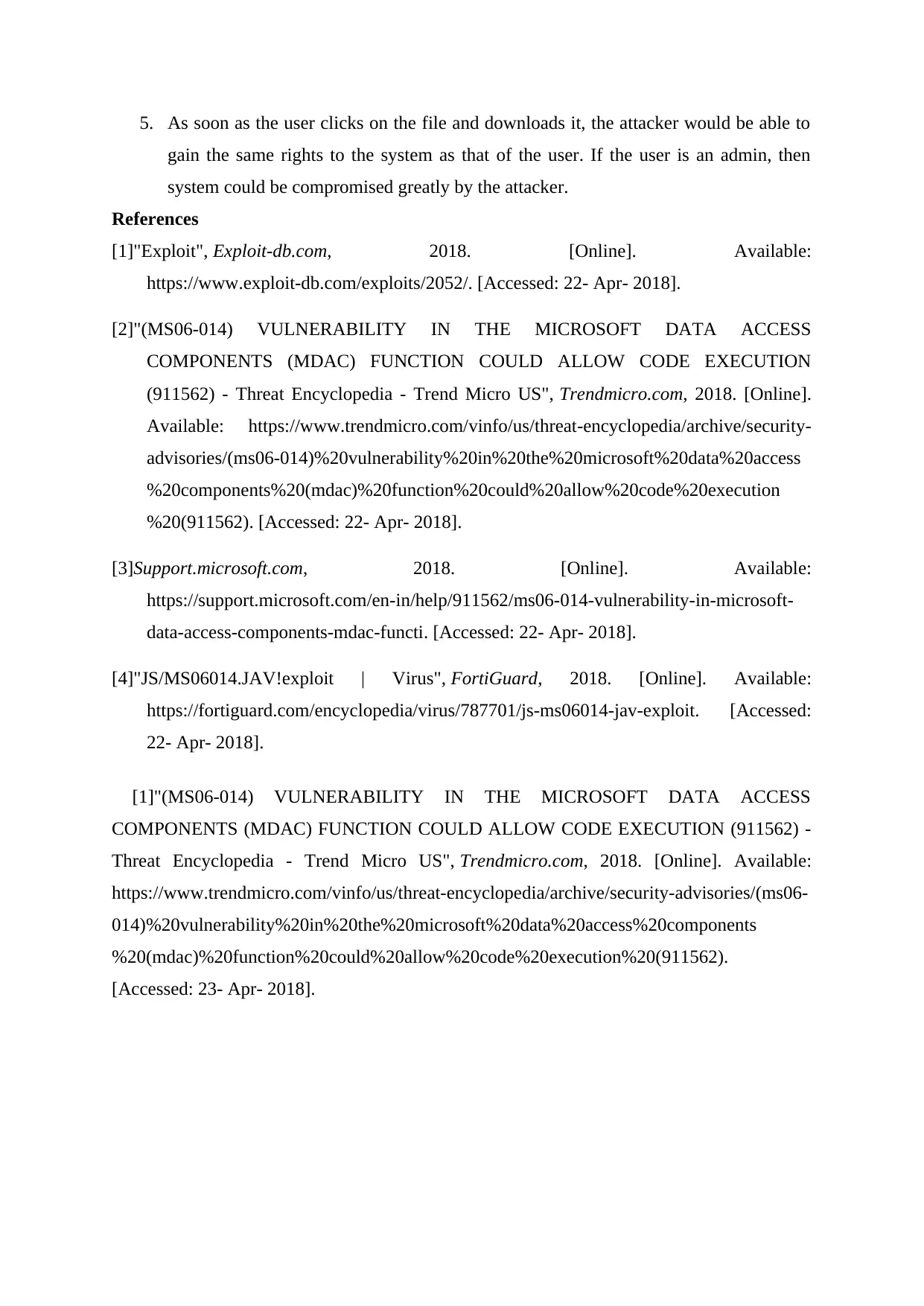Microsoft MDAC Vulnerability Analysis
VerifiedAdded on 2019/09/19
|4
|1091
|417
Report
AI Summary
A vulnerability was discovered in the Microsoft Data Access Components (MDAC) in the first quarter of 2006. The vulnerability allowed remote attackers to execute code remotely and gain access to the computer. Microsoft designated this vulnerability as critical and immediately started working on a solution. The affected systems include Windows 98, Millennium Edition, Windows XP, Windows 2000, and Windows Server 2003. The exploitation scenario involves an attacker hosting a website with a web page infected with the vulnerability, using social engineering tactics to lure users to the site. Mitigation strategies include configuring Internet Explorer's Enhanced Security Configuration, disabling automatic detection of intranet sites, and installing antivirus software. Remediation includes installing Microsoft updates and running the Microsoft Baseline Security Analyzer.
Contribute Materials
Your contribution can guide someone’s learning journey. Share your
documents today.
1 out of 4










![[object Object]](/_next/static/media/star-bottom.7253800d.svg)